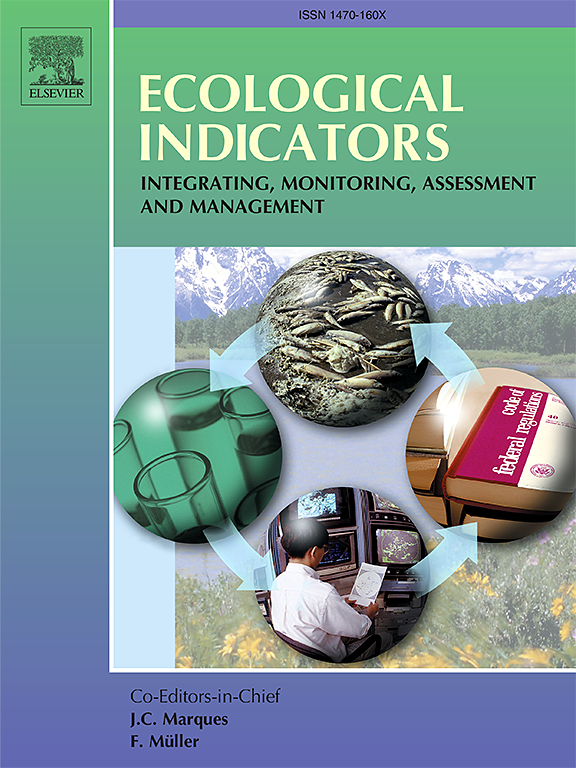Ecosystems resilience assessment of forest and grassland subjected to ecological drought
IF 7
2区 环境科学与生态学
Q1 ENVIRONMENTAL SCIENCES
引用次数: 0
Abstract
Ecosystem resilience is essential for sustaining ecosystems in the face of increasingly extreme climate conditions. However, current research faces challenges in improving the accuracy of identifying ecological drought events, enhancing temporal resolution, and refining model fitting for resilience quantification. In this study, a novel, daily-scale Ecosystem Service Supply (ESS) index is introduced, integrating water yield, carbon storage, and habitat quality into a unified measure weighted by ecosystem service equivalency factors. Baiyangdian wetland in North China was chosen as the study area, where the ESS index and the Standardized Ecological Water Deficit Index (SEWDI) were combined to jointly identify ecological drought events that directly alter ecosystem functioning. To characterize post-drought recovery dynamics, Bayesian non-parametric quantile regression model is employed to construct resilience curves, which capture the relationship between drought intensity and ecosystem recovery time at multiple quantiles. The results reveal that forests exhibit greater resilience under mild drought conditions, while grasslands demonstrate superior recovery capacity during more severe droughts. Due to differences in ecosystem structure and vegetation characteristics, forest ecosystems experience a significant decline in resilience under extreme drought conditions. In contrast, grassland ecosystems generally maintain stable or even slightly improved recovery resilience. By improving the temporal resolution of ecosystem assessments and introducing a flexible method to quantify resilience trajectories, this approach offers valuable insights for evaluating drought resilience and guiding ecosystem management in water-limited environments.
求助全文
约1分钟内获得全文
求助全文
来源期刊

Ecological Indicators
环境科学-环境科学
CiteScore
11.80
自引率
8.70%
发文量
1163
审稿时长
78 days
期刊介绍:
The ultimate aim of Ecological Indicators is to integrate the monitoring and assessment of ecological and environmental indicators with management practices. The journal provides a forum for the discussion of the applied scientific development and review of traditional indicator approaches as well as for theoretical, modelling and quantitative applications such as index development. Research into the following areas will be published.
• All aspects of ecological and environmental indicators and indices.
• New indicators, and new approaches and methods for indicator development, testing and use.
• Development and modelling of indices, e.g. application of indicator suites across multiple scales and resources.
• Analysis and research of resource, system- and scale-specific indicators.
• Methods for integration of social and other valuation metrics for the production of scientifically rigorous and politically-relevant assessments using indicator-based monitoring and assessment programs.
• How research indicators can be transformed into direct application for management purposes.
• Broader assessment objectives and methods, e.g. biodiversity, biological integrity, and sustainability, through the use of indicators.
• Resource-specific indicators such as landscape, agroecosystems, forests, wetlands, etc.
 求助内容:
求助内容: 应助结果提醒方式:
应助结果提醒方式:


